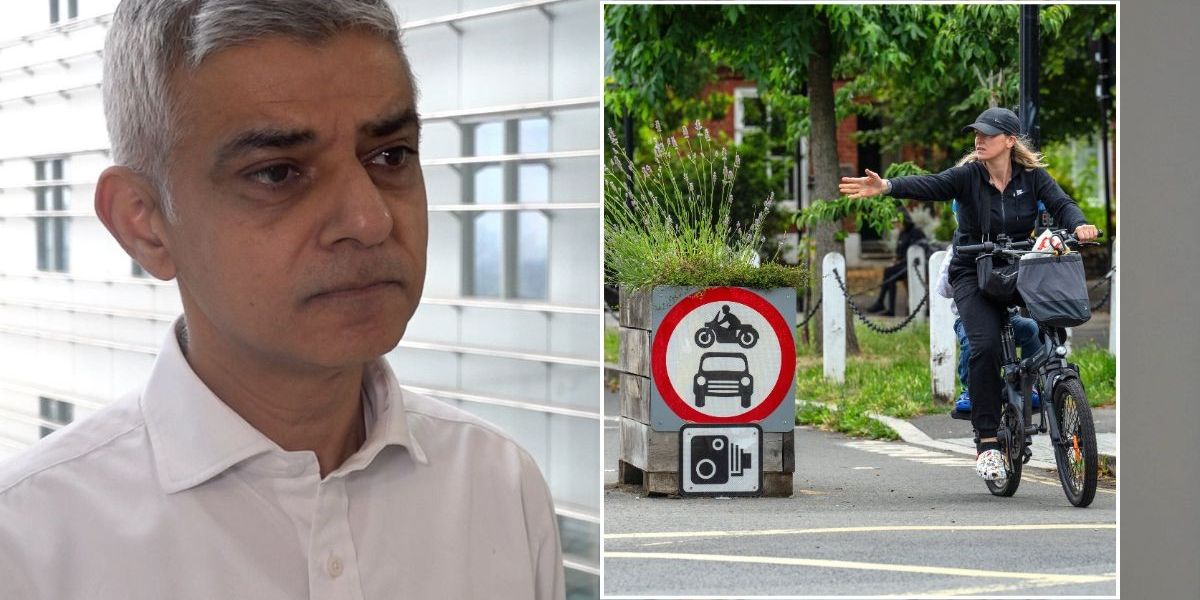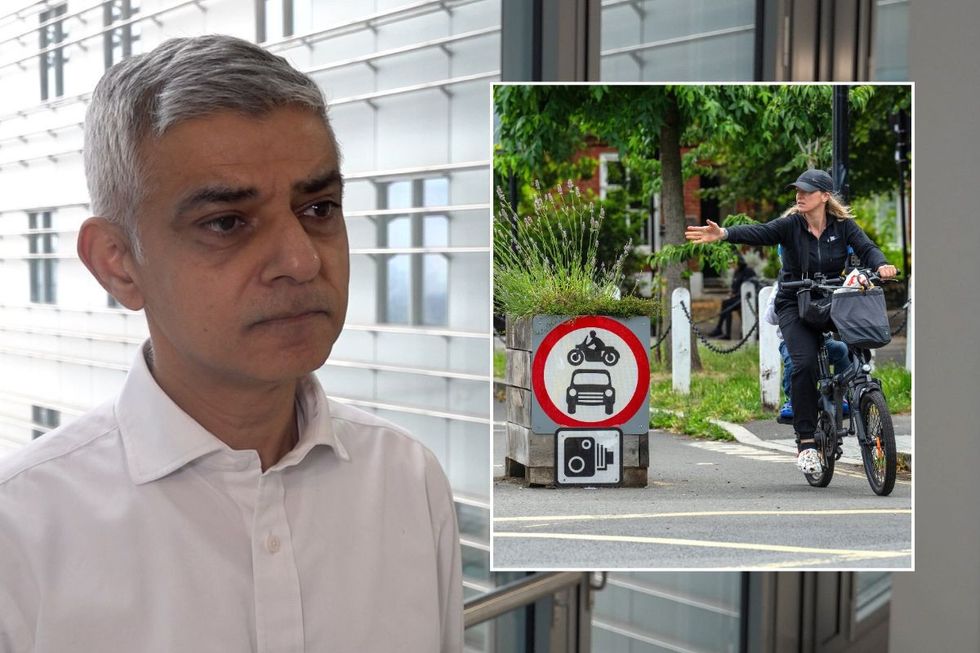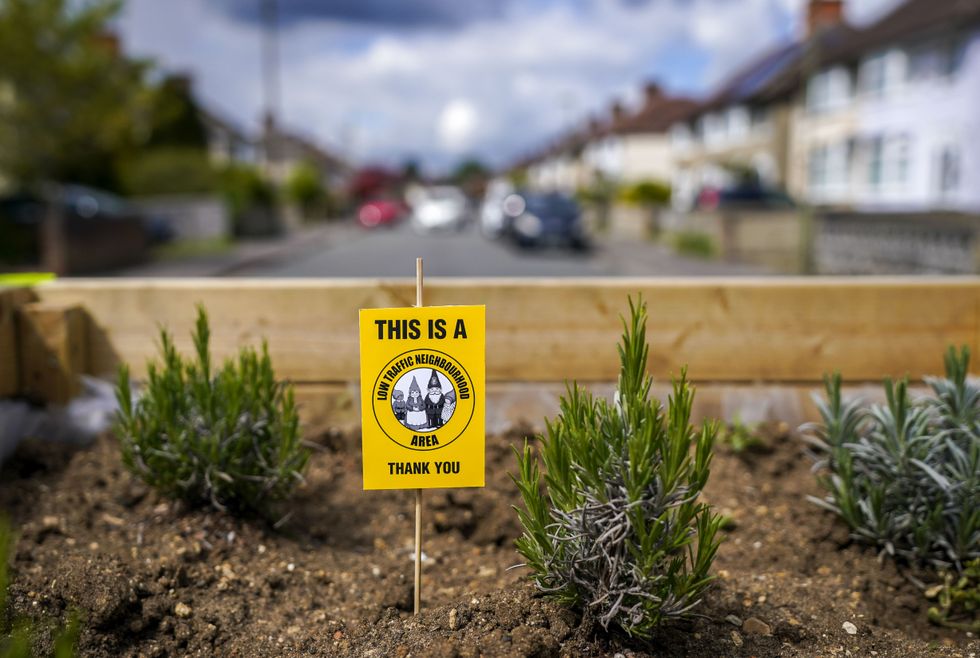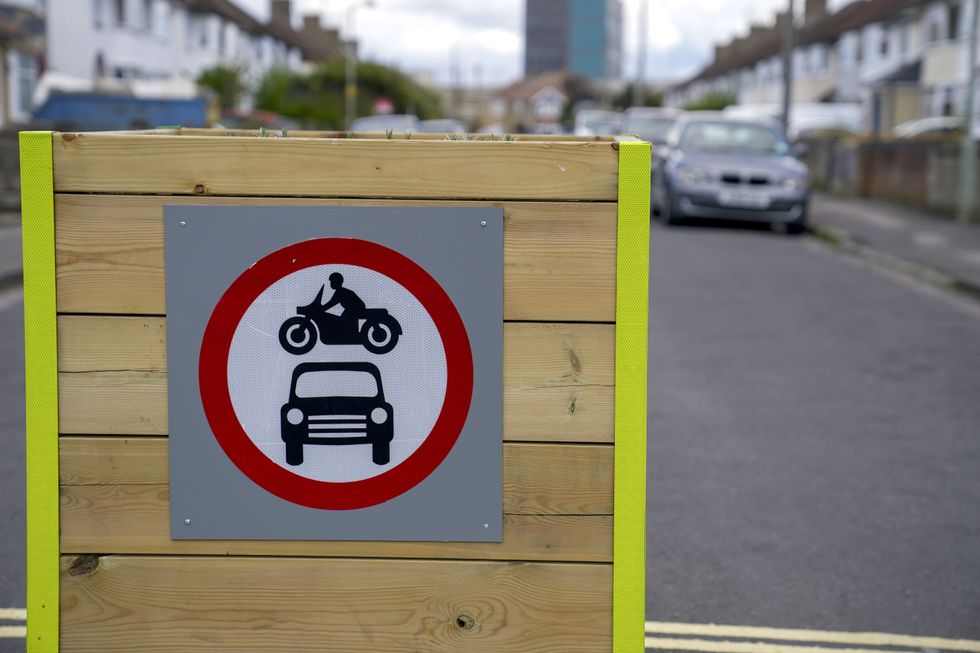



A damning new report has reported that controversial Low Traffic Neighbourhoods have not led to a drop in the amount of car use across London, despite being backed by London Mayor Sadiq Khan.
The rollout of Low Traffic Neighbourhoods has been accelerated in recent years as local authorities look to curb car use, reduce traffic and improve local roads for residents.
However, a report found that Low Traffic Neighbourhoods did not discourage Londoners from using their cars less, although it did increase the amount of cyclists.
According to The Times, Transport for London decided not to publish the Travel and Place report after it was conducted by the University of Westminster.
It added that TfL agreed to pay more than £82,000 for a three-year study which looked into the travel habits of more than 4,500 people across the capital.
The research found that people living inside of LTNs cycled more, but there was not a "significant association between the proportion of LTN roads and minutes of past-week car use".
Funding for the study was withdrawn last year, with a TfL "completion statement" outlining that the data did not offer new insights.
Speaking during a 2023 London Assembly meeting, Sir Sadiq Khan said Low Traffic Neighbourhoods "really work", adding that they were changing streets to make active travel more appealing.

New data has revealed that Low Traffic Neighbourhoods have failed to cut the use of motor vehicles
|PA/GETTY
Low Traffic Neighbourhoods became commonplace across the capital during the coronavirus pandemic, with more than 100 active schemes believed to be active around London.
Critics of the traffic measures have slammed the report and questioned why Transport for London failed to publish the documents previously.
John Stewart, from the campaign group Social and Environmental Justice, told The Times: "The failure to publish is a serious omission because it could have helped inform decision-makers.
"Councils and local councillors often support LTNs because they believe or are told that they are green and help reduce air pollution but this study hugely undermines that argument."
 Low Traffic Neighbourhoods are common around London | PA
Low Traffic Neighbourhoods are common around London | PA
A spokesperson for Transport for London said: "We are committed to supporting high-quality research that helps us understand how our policies and programmes are working.
"This particular study was initially funded to explore the impacts of LTNs but following a review of the second year's findings, we concluded that the data didn't offer sufficient new insights to justify further investment in continuing the survey.
"We remain confident that LTNs can reduce traffic levels in the area, making streets safer and enabling more walking and cycling."

Low Traffic Neighbourhoods were introduced across London during the pandemic in 2020
| PA